One of the most exciting things about visiting Australia was getting to come face to face with a whole slew of animals that I had never seen (and in some cases never even heard of) before. Coming from Canada, I am familiar with animals like loons, squirrels, moose, and bears, but ask me to identify Australian wildlife and I’ll be stumped. This is why I loved visiting The Currumbin Wildlife Sanctuary in the Gold Coast of Australia – not only did I get to see Australian creatures up close, but I also got to learn a lot of cool facts about them. So let’s have a look, shall we?

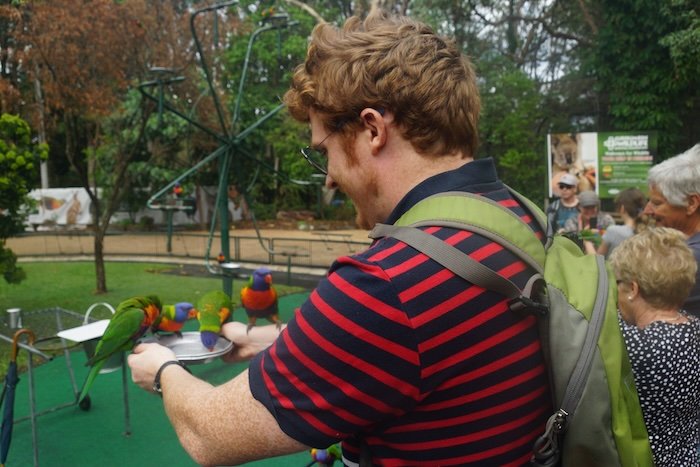
Cassowary
Not only is the cassowary one of Australia’s most dangerous birds, but it’s also one of the strangest creatures I have ever encountered. Seriously, it’s like a giant super bird with a really bad temper.
The cassowary looks like a black emu, it has a blue and turquoise head like a peacock, and it has red wattles like a rooster. It walks on three-toed feet with dagger-like claws that are slightly reminiscent of a dinosaur – these are particularly dangerous since cassowaries have been known to kick humans and animals – oh, and did I mention it also has a horn on top of its head? Yup.
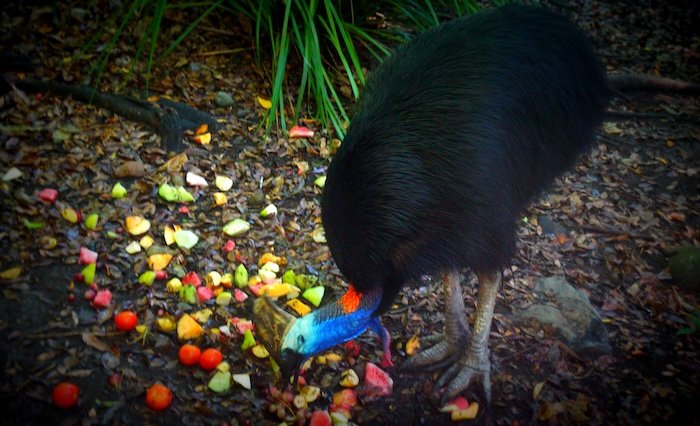
If that’s not enough, cassowaries can run up to 50 kilometres an hour, they can jump up to 1.5 metres, and they are good swimmers. Ha, try escaping one of those!
And then you have that stare; their faces are expressionless and they glare at you with emotionless eyes that say, “Don’t you dare mess with me.”
As cool as it was to see one, I hope I never encounter one in the wild…
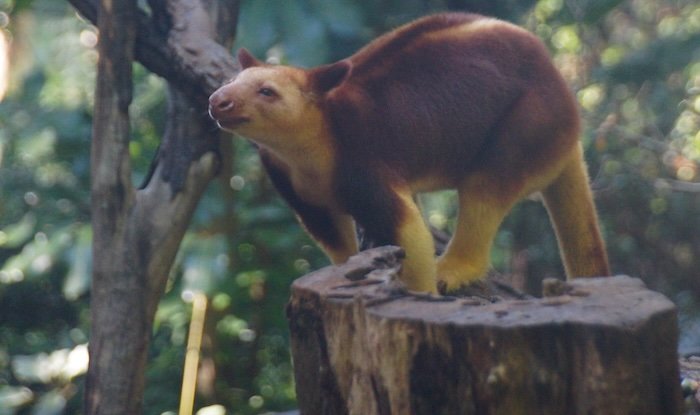
Tree kangaroos
I was walking through the sanctuary with one of the guides when she offered to show me her favourite animal – the tree kangaroo. I stared at her blankly, “You mean like regular kangaroos except they live on trees?”
Well, not quite…
I’m honestly not surprised I had never heard of this animal. The tree kangaroo inhabits the tropical rainforests of New Guinea and parts of northeastern Queensland – nowhere near where I live!
When we arrived at their enclosure, I was surprised to see that the tree kangaroo doesn’t actually look much like your average kangaroo…
They look more like little brown bears with a bit of an orange tinge, and they have really long tails which help them remain balanced when they jump around. These guys are quite agile and can jump up to 9 meters from tree to tree, and 18 meters to reach the ground, however, once they’re on solid ground their movements become a bit clumsy and awkward.
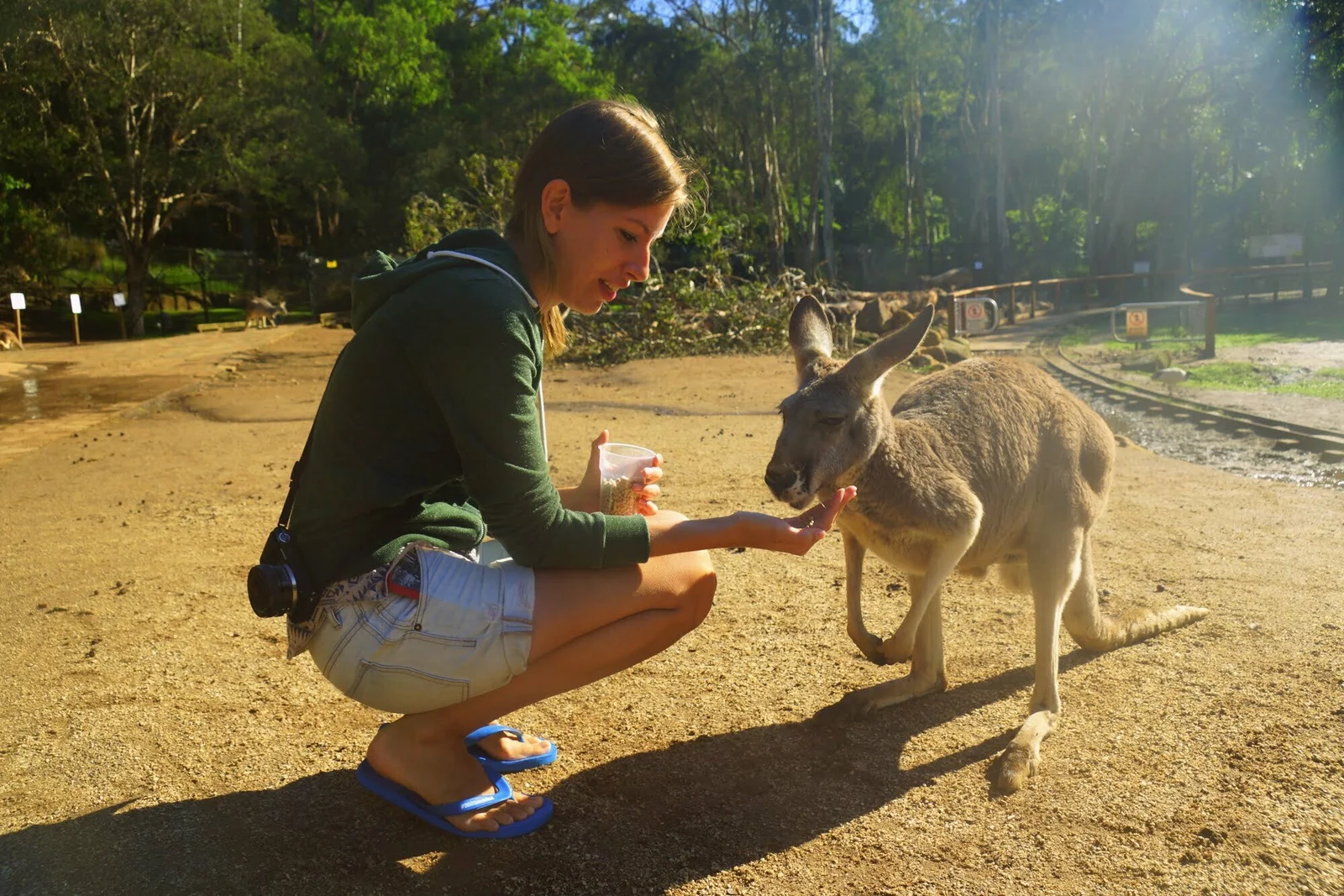
Kangaroos
When it comes to the ‘roos, I got to learn some new terminology. Apparently a male kangaroo is called a boomer, a female kangaroo is called a flier, and a baby kangaroo is called a joey.
One of the cool things about coming face to face with the kangaroos at the Currumbin Wildlife Sanctuary is that the animals were incredibly docile and not at all afraid of humans. This of course has a little something to do with the fact that you can feed the kangaroos pellets. Since I visited early in the morning, most of the kangaroos were napping out in the sun, but a little shake of the cup was enough to wake them up from their slumber.
I got to learn quite a bit about kangaroos during my visit, but what made my jaw drop was learning how they are born – it is one of the weirdest and most fascinating births in the whole animal kingdom!
So, basically a newborn kangaroo is about the size of a jellybean when it emerges from one of its mother’s two uteri. At this point the kangaroo hasn’t even developed eyes, yet it somehow manages to hang on to its mother’s fur and instinctively climb all the way up into her pouch. Once inside the pouch it will latch on to the mother’s nipple where it will feed and continue to grow over the coming months.
I stared at the guide with disbelief as she was telling me this – seriously, how does something the size of a jellybean manage to blindly climb through fur without losing its way or dropping to the ground? – I thought she was pulling my leg, but that is indeed one of nature’s marvels. Seriously, you have to watch this 2-minute clip from the National Geographic showing the whole process unfold. FA-SCI-NA-TING!
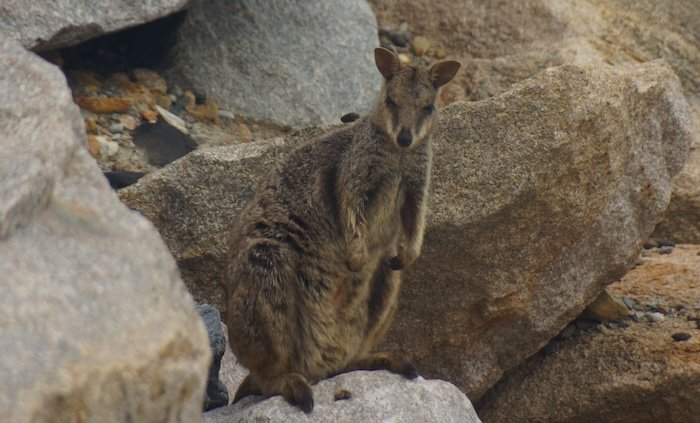
Wallabies
“Oh, it’s a cute kangaroo!”
Those were my words the first time I saw a wallaby. You see, before coming to Australia, I had never even heard of wallabies, so when I saw a cute little animal that resembled a kangaroo I thought it was the ‘real’ thing. Truth is that while wallabies and kangaroos belong to the same family of macropods (they have large feet) and marsupials (they have a pouch to carry their babies), they are quite different from each other.
Let’s start with their height; kangaroos can tower at a whopping 8 feet, while wallabies are about 2 feet tall. Kangaroos have giant disproportionate legs which are ideal for speed, while wallabies have smaller legs which are good for agility. Also, since kangaroos inhabit the grasslands they prefer to eat grass, while wallabies live in forested areas and prefer a diet of leaves.
As for similarities, both wallabies and kangaroos communicate with each other by thumping their feet when they sense a nearby threat.

Koalas
First things first, the koala is not a bear. They may be furry and live in trees, but if there’s one sure way to piss off an Australian, it’s to call these creatures koala “bears”.
During my koala encounter, I learned that koalas love to sleep (as you can probably tell from the photo above), and they can nap around 18+ hours a day. When they aren’t snoozing, they love to eat, and since they live in Eucalyptus trees, their diet consists of Eucalyptus leaves. While eating such large quantities of these leaves would be poisonous for other creatures, koalas have a long digestive system which helps them break down the leaves.
I also learned that koalas don’t normally need to drink water because they absorb enough moisture from the leaves they eat. How about that?

Dingo
I met a German traveller on Magnetic Island and he had horror stories to share about dingo attacks. He had been backpacking around the country for half a year and had spent a lot of time in backpacker hangouts; the clear theme in his stories was that when there is too much alcohol involved, stupidity ensues.
So how do these dingo attacks on backpackers come about? Well, backpackers decided to spend the night camping on the beach, you throw a lot of booze into the mix, a drunken individual stumbles away down the beach, they pass out cold, and next thing you know they wake up to a hungry dingo mauling their arms and legs. It sounds crazy and it is rare, but it happens.
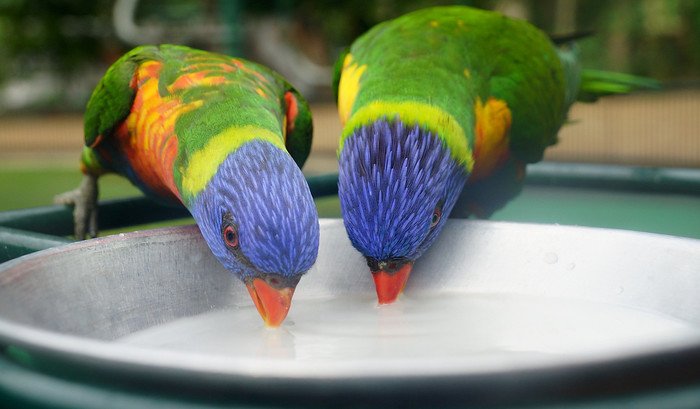
Rainbow lorikeets
One of the perks of arriving at the Currumbin Wildlife Sanctuary as soon as it opened was getting to feed the rainbow lorikeets. These colourful parrots know 8:00 a.m. is feeding time and they were chitter-chattering on the branches in anticipation for breakfast.
I was handed a dish with milk and honey and before I knew it the birds were landing on my arms, shoulders, and head. I kind of felt like the pigeon lady in Mary Poppins.
They also feed the lorikeets in the afternoons at 4:00 p.m., so don’t worry about not being able to make the first feeding time.
Echidnas
Again, kind of embarrassing to admit this, but I had never heard of echidnas prior to visiting the Currumbin Wildlife Sanctuary…
I learned that the echidna is a solitary mammal which can be found widely across Australia. They are covered in coarse hairs and spines (great for protection), and they also have large claws which make them powerful little diggers. While they don’t have any teeth, they do have really long tongues (around 18 centimetres in length!), which allow them to reach insects in hiding.
Another fascinating wildlife experience fact: the echidna and the platypus are the only egg-laying mammals alive today.
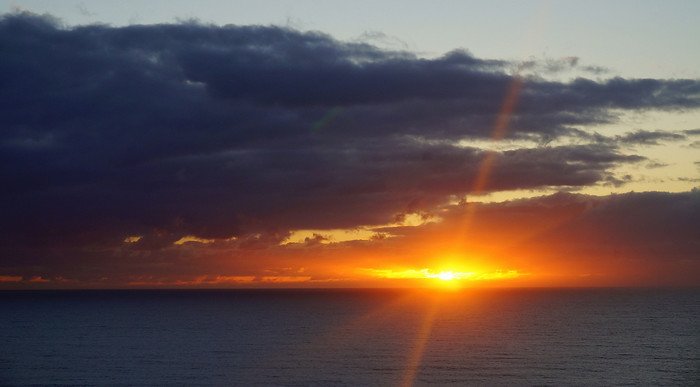
And that’s my little intro to Australian wildlife! If you ever find yourself in the Gold Coast, the Currumbin Wildlife Sanctuary is a really fun place to check out. I’ve just highlighted a fraction of the animals they care for, but you can also find emus, wombats, Tasmanian devils, macaws, cockatoos, bearded dragons, and more.
Visiting Currumbin Wildlife Sanctuary: Itineraries, Packing Lists, Etiquette & Tips
Before You Go: Quick Wins That Make the Day Better
- Arrive early. Lorikeet feedings are the most joyful chaos you can experience before coffee; mornings are cooler, animals are more active, and crowds are lighter.
- Build your day around keeper talks. Those short talks are mini masterclasses. Check the day’s schedule at the gate and set alarms on your phone.
- Dress like you mean it. Light, breathable fabrics, closed-toe shoes, hat, sunglasses, and a light rain shell if the forecast looks mischievous.
- Hands free > hands full. Bring a small daypack, not a tote. You’ll want both hands for cameras and curious marsupials.
- Hydrate and reapply. Queensland sun doesn’t play—refill water often and re-sunscreen more often than you think.
- Be flexible. Animals have off days and shows can shift with weather. You’ll see more if you go with the flow.
How to Get There (Without the Drama)
By Car
- Parking: There is on-site parking. Arrive near opening for the easiest spots, especially on weekends and school holidays.
- Timing: Factor in Gold Coast traffic if you’re coming from Surfers or Brisbane—add buffer time so you’re not sprinting to the lorikeets.
By Public Transport
- Tram + Bus combo: A simple recipe from many beach suburbs: tram to a main hub, then a local bus toward Currumbin/airport. Get off at (you guessed it) the stop for the sanctuary. Schedules can change—check live routes in your transit app.
- Ride-share: Door-to-door and great for families with strollers or those with limited mobility.
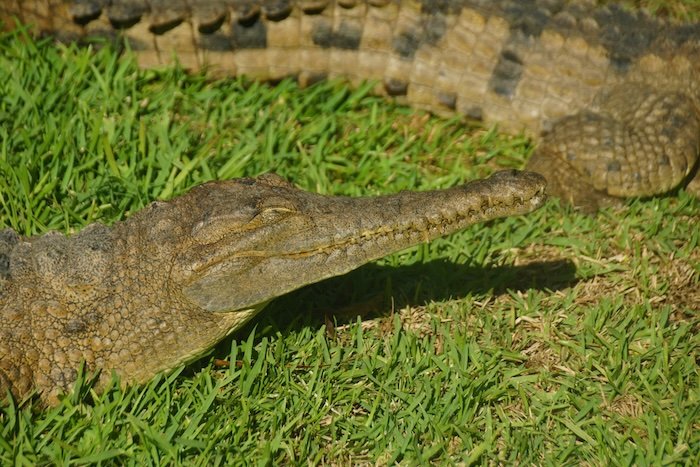
Smart Routes: 3 Easy Itineraries
1) Early Bird Half-Day (4–5 hours)
- 08:00 – Rainbow lorikeet feeding (arrive 10–15 minutes early to watch them gather).
- 08:45 – Wander the free-flight aviaries while the morning light is soft for photos.
- 09:30 – Kangaroo lawn time. Feed gently, go slow, sit at their level. Morning is peak roo-sociability.
- 10:30 – Keeper talk (birds of prey or reptiles—whichever you fancy).
- 11:15 – Koala encounter area. Watch them do what they do best (snooze, nibble, repeat). Ask keepers your burning eucalyptus questions.
- 12:00 – Lunch and a final lap for any must-sees you missed.
2) Full-Day Family Adventure
- 08:00 – Lorikeets (breakfast with sound effects).
- 09:00–10:30 – Kangaroos & wallabies + a rest stop at a shaded playground/picnic area.
- 10:45 – Short keeper talk to reset attention spans.
- 11:30 – Lunch (kid-friendly options abound, or picnic).
- 12:15–14:00 – Slow safari through the “who’s-who” of Australia: echidnas, wombats, Tasmanian devils, tree kangaroos.
- 14:15 – Second keeper talk or wildlife show.
- 15:00 – Ice-cream morale boost + souvenir stop.
- 16:00 – Afternoon lorikeet feeding (round two for the bird chorus).
3) Photographer’s Loop
- Golden hour – Start in the open habitats (kangaroos/wallabies) for dreamy backlight and catchlights.
- Mid-morning – Cassowary and reptile zones for eyes-through-foliage shots; use a longer focal length to compress fences.
- Late morning – Birds of prey demo for action frames; burst mode ready.
- After lunch – Koalas for close-ups; watch for that micro-yawn that breaks the internet.
- Blue hour – If you’re still around, soft light on the entrance precinct and lorikeet silhouettes.
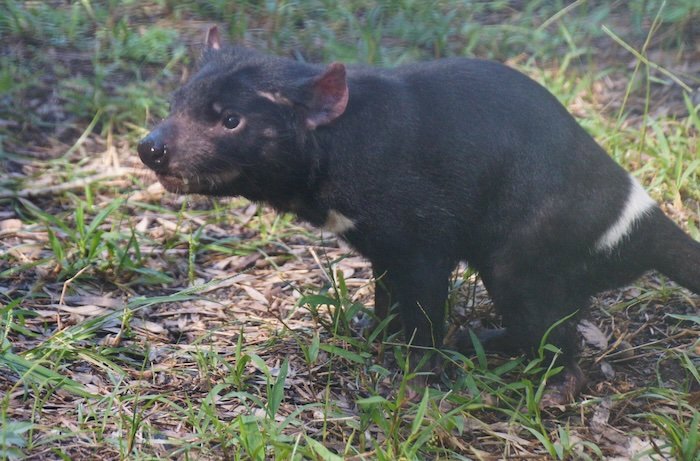
Encounters & Keeper Talks: What’s What (At a Glance)
| Experience / Talk | What You’ll See | Best Time | Kid-Friendly? | Photo Tips |
|---|---|---|---|---|
| Lorikeet Feeding | A cloud of technicolour parrots landing everywhere | 08:00 & late afternoon | Yes (hold bowls for little hands) | Fast shutter (1/1000+), continuous AF; protect hair if you’re precious about it |
| Kangaroo & Wallaby Lawn | Hand-feeding roos and comfy ground-level hangs | Mornings before naptime | Very | Sit low, eye-level portraits; watch the background for clean lines |
| Koala Encounter Area | Leaf buffet + power naps in forks | Mid-morning & mid-afternoon | Yes (quiet voices) | Catch side-light on fur; macro for paw pads |
| Birds of Prey Show | Aerial swoops, talon talks, owl side-eye | Check daily schedule | Yes (seated) | Pre-focus on perch, burst for takeoff |
| Reptile Talk | Scales, shells, and serpent myth-busting | Late morning | Yes (front rows get good views) | Polarizing filter kills glass glare |
| Vet/Conservation Updates | Rehab stories & releases | Varies | Older kids/teens | Documentary vibe; ask about release protocols |
(Encounters and schedules can change—grab the day’s program at the gate.)
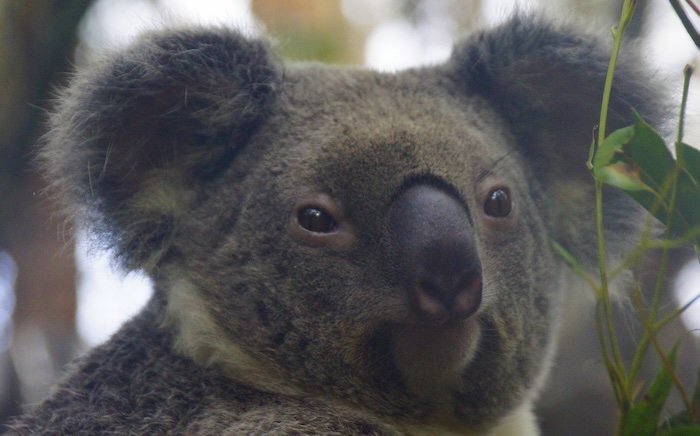
Field Notes: Your DIY Mini Guide (Because You’ll Be Quizzed at Dinner)
Kangaroo vs. Wallaby (vs. “What is a pademelon?”)
- Height: Roo = tall (can be very tall); Wallaby = compact cutie.
- Legs & leaps: Roo legs are built for speed and distance; wallaby legs for agility in forests.
- Diet: Roos graze grasses; wallabies browse leaves.
- Communication: Both thump the ground to warn friends (and startle you).
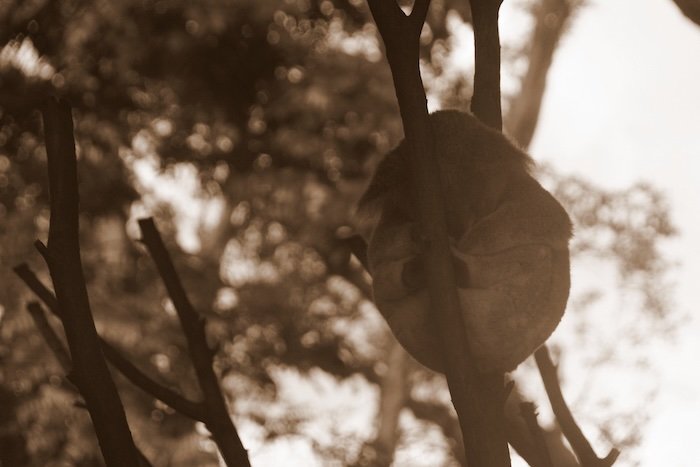
Koalas (Not Bears! Ever!)
- Diet & digestion: Eucalyptus leaves, digested slooowly with specialized gut flora.
- Hydration: Usually from leaves; supplemental water during heatwaves/drought.
- Sleep: 18–22 glorious hours—energy conservation is the name of the game.
Echidnas (The Gentle Oddballs)
- Spines: Quills for defense, not aggression.
- Tongue: Sticky and surprisingly long—perfect for ant buffets.
- Reproduction: One of the only egg-laying mammals (with platypus).
Cassowaries (Respect the Dinosaur)
- Top traits: Helmet (casque), dagger toes, kaleidoscope face.
- Speed: Can hit 50 km/h and jump ridiculously high.
- Rule: Admire from a respectful distance and follow keeper directions.
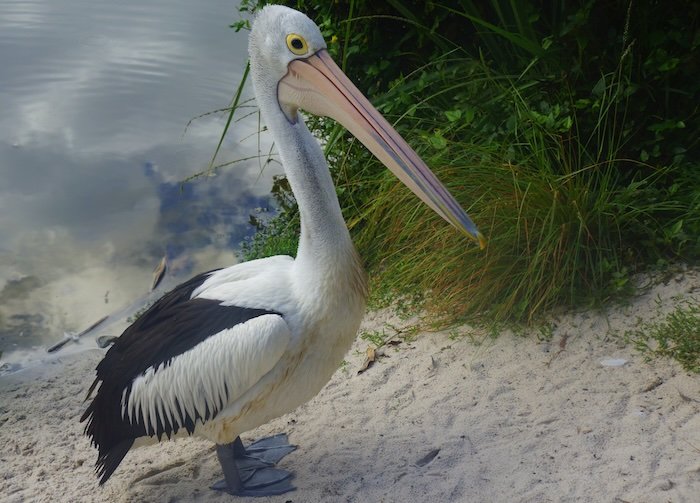
Wildlife Etiquette & Safety
- Let animals choose the moment. If a kangaroo turns away, that’s a “no, thanks.”
- Feed only what’s provided. Human snacks are a hard no.
- Hands to yourself. Touch only with keeper direction; no poking, tapping glass, or chasing.
- Quiet wins. Whisper around koalas, nocturnals, and recovering animals.
- Stroller smarts. Brake on hills, give space at barriers, and keep snacks sealed.
- Never approach wild dingoes or cassowaries outside sanctuaries. (Beach naps + open snacks + wildlife = bad combo.)

What to Pack (Light but Right)
Daypack Essentials
- Refillable water bottle (and a second if it’s sticky-hot)
- High-SPF sunscreen + lip balm
- Hat & sunglasses
- Hand sanitizer & wet wipes
- Compact rain shell or poncho
- Camera/phone + power bank (shows chew battery)
- Light snacks (check on any restrictions)
- Tissues + small rubbish bag
- Mini first-aid (plasters, antihistamine if you’re sneezy)
Optional Nice-to-Haves
- Binoculars (for birds & tree dwellers)
- Polarizing filter (reduce reflection on glass/water)
- Travel towel (post-summer showers or beach detour)
With Kids
- Spare shirt (lorikeet enthusiasm is…sticky)
- Extra water & fruit pouches
- Tiny travel games/stickers for lunch waits
- Stroller or foldable wagon (the site is very walkable but little legs get tired)
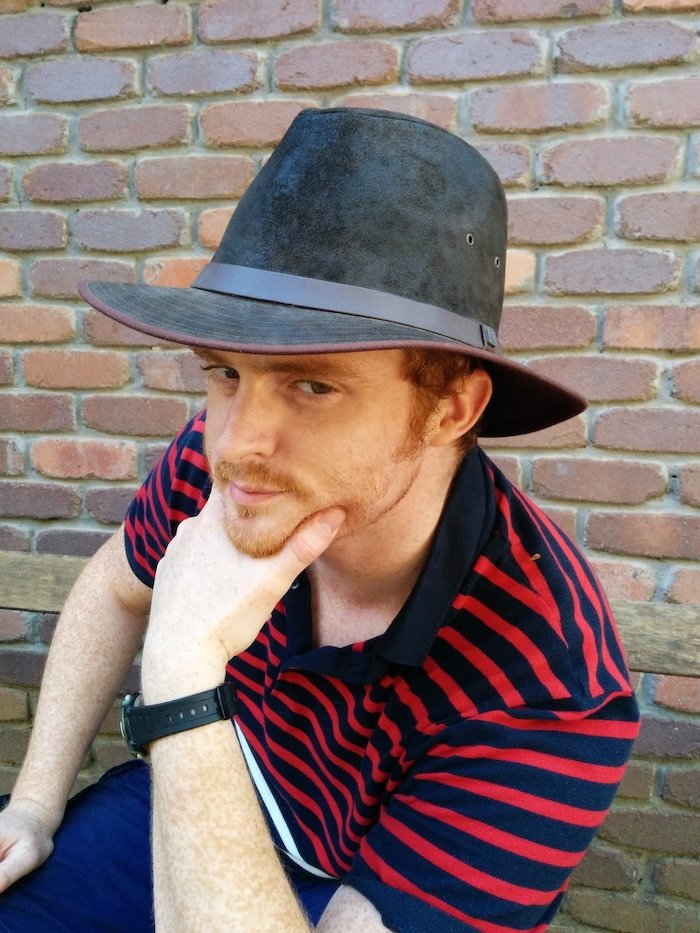
Currumbin Wildlife Sanctuary Trip FAQ
What’s the best time to arrive?
First thing in the morning. You’ll snag easy parking, catch the lorikeet feeding, enjoy cooler temperatures, and see animals at their most active before the midday nap wave.
How long should I plan for a visit?
A focused half-day covers highlights; a full day lets you see keeper talks, slow-wander exhibits, and circle back to favourites without rushing.
Can I hold a koala at Currumbin?
Photo opportunities with koalas are often available under strict welfare rules, but the exact format (including whether holding is permitted) can change. Check the current policy and book early if it’s on your must-do list.
Is the sanctuary stroller and wheelchair friendly?
Yes. Paths are broad and mostly flat, with plenty of shade, seating, and accessible facilities. Some boardwalks have gentle grades—take your time and enjoy the pauses.
Do I need to book tickets or encounters in advance?
General entry is usually available on the day, but weekends/holidays get busy. Pre-book entry and any special encounters to lock in your preferred times.
What should I wear?
Light, breathable clothing, a hat, and comfortable closed-toe shoes. Add a light layer for breezy mornings or an inexpensive poncho if showers are forecast.
Can I bring my own food and water?
Reusable water bottles are encouraged and there are places to refill. Casual dining is available on site and shady picnic spots make a DIY lunch easy—just keep snacks sealed around animals.
Are there specific feeding times I shouldn’t miss?
Yes—the rainbow lorikeet feedings at opening and again in the late afternoon. They’re lively, photogenic, and very “Australia.” Check the day’s schedule for any keeper talks you want to catch, too.
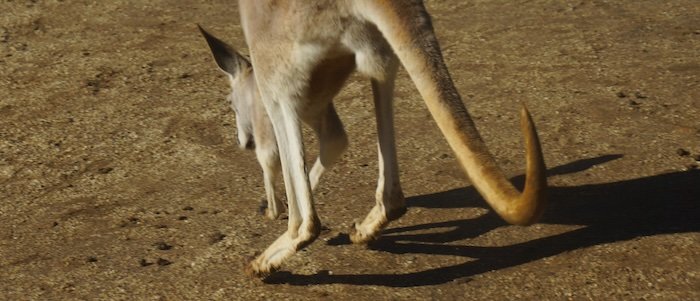
Is Currumbin an ethical place to see wildlife?
Currumbin focuses on conservation, education, and rehabilitation, with animal welfare front and centre. Stick to staff guidance—no outside food for animals, no flash for nocturnals—and you’ll help keep it that way.
Can I leave and re-enter the sanctuary in the same day?
Policies can change; ask at the entrance about same-day re-entry options. If it’s important for naps or beach breaks, clarify before you head in and keep whatever stamp or wristband they provide.
What’s the photography etiquette?
Avoid flash around nocturnal animals, keep a respectful distance, and share space at popular viewpoints. For enclosure glass, a polarizing filter helps reduce glare; for birds, go for a fast shutter and continuous focus.
What if it rains?
Light rain can be a gift—cooler temps, active animals, and beautiful colours. Bring a compact rain shell and keep an eye on the schedule; shows may shuffle, but there’s still plenty to enjoy.
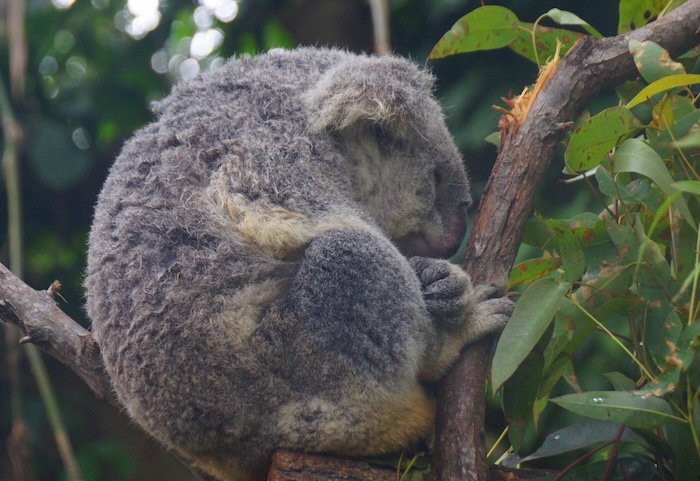
Have you visited the Currumbin Wildlife Sanctuary?
What’s your favourite Australian animal?

My favourite aussie animal is a quokka. They’re these cute rodent like animal on Rottnest island off the coast of Perth. They jump around a little like kangaroos and don’t seem nervous of humans at all. The cassowary terrified me. When locals described it to me, with that long middle class, it sounded like a raptor was free wondering round the jungle where we were staying!
Oh my goodness!! I had never heard of the quokka, but I just googled some images and they look so cute – like miniature wallabies that are perpetually happy. I need to go back to Australia and keep exploring! 🙂
I really like the rainbow lorikeets! There is something about these birds that are always so alluring, and I don’t get it. Maybe because of their colors? I don’t know.
Glad you were able to experience feeding them first hand. That seems awesome! 🙂
Lovely summary – I used to go to the wildlife sanctuary as a kid and the rainbow lorikeets feeding was my lasting memory and wow all these years later they are still doing it. I should take my kids next school vacation – I love that part of the world – a swim at Currumbin beach after is a must!
How crazy are cassowaries?! I have to admit I first learned of them after watching an episode of House Hunters International that was filmed in Australia. And then I randomly saw one in an enclosure in Indonesia, which was awful considering they are seriously endangered animals. The cassowary is definitely the weirdest creature I have ever seen. But I agree, I would never want to encounter one in the wild!
I’d have to say the koala for the cuteness. I didn’t know the dingo could be dangerous, and I guess neither did those poor backpackers! Everyone says that Australia is rich in wildlife so I can’t wait to visit in the spring.
Lovely. I could read about these animals all day. And very informative. I didn’t know the names of the male and female kangaroo.
That looks like a crazy adventure! I didn’t realize kangaroos could be 8 feet tall! Crazy! I can’t wait to visit Australia someday. Like you, I’m used to the moose, deer, and geese living in Maine. 🙂
I love the look of cassowaries but admittedly dingoes are my favourite! I always wanted to go to Frazer island, I think I would just be in Dingo heaven!
I have never heard of of tree kangaroo or echidnas. That tree kangaroo is adorable. Just another reason to visit Australia sometime soon! We don’t get much wildlife in NYC.
What an awesome list. I’ve heard of the few of those before, but the Cassowary was new to me. Great stuff, Audrey!
It’s just me or that cassowary bird looks like she has a hat on her head ?
I LOVE echidnas. The first time I spotted them in the wild I think I screeched. They’re so cute. I also love Wombats. They are so round and funny – totally different than any animal that I’d seen before coming to Australia. The Tasmanian Devil was a favorite of mine too – I think I was in awe that it was actually a real thing and not just a fictional cartoon animal. Alas, they don’t spin though.
Love this post and the cute pictures! The wildlife of Australia is amazing, so that’s great you got to check a few out up close!
So many odd-looking, adorable animals!
My most loved aussie creature is a quokka. They’re these charming rat like creature on Rottnest island off the shore of Perth. They bounce around similar to kangaroos and don’t appear to be anxious of people by any stretch of the imagination. The cassowary frightened me. At the point when local people depicted it to me, with that long white collar class, it seemed like a raptor was free pondering round the wilderness where we were sitting tight!